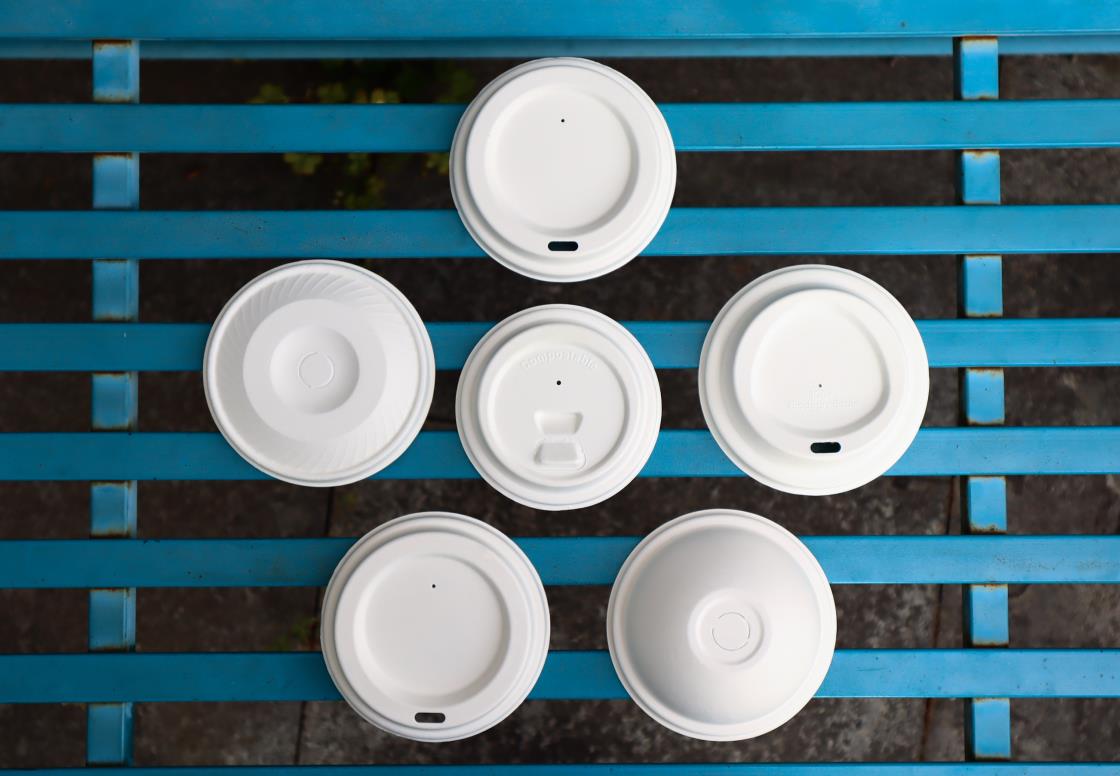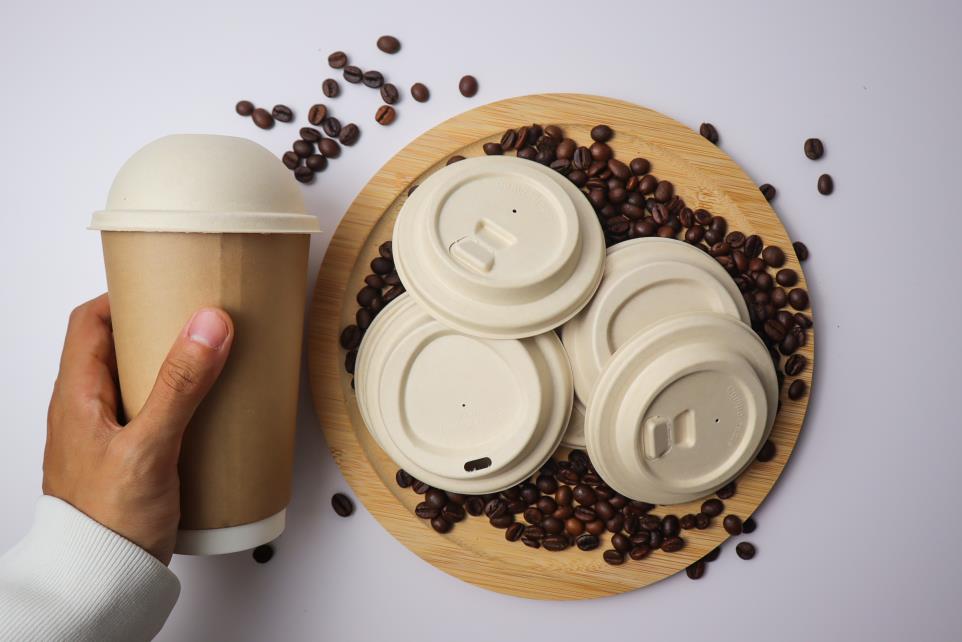The issue of plastic pollution has become increasingly prominent in recent years, with disposable plastics like single-use straws, cups, and lids contributing significantly to the problem. As a response, innovative alternatives to these products have emerged to reduce waste and promote sustainability. One such solution is the sugarcane pulp lid, an eco-friendly substitute for traditional plastic lids. In this article, we will examine the differences between sugarcane pulp lids and plastic lids in terms of environmental impact, production, and application.

Environmental Impact:
1. Biodegradability: Sugarcane pulp lids are compostable, breaking down within a few months to a year, depending on the composting conditions. In contrast, plastic lids can take hundreds of years to decompose, persisting in the environment and contributing to pollution.
2. Greenhouse gas emissions: The production of sugarcane pulp lids generates fewer greenhouse gas emissions than the manufacturing of plastic lids. Sugarcane, as a crop, absorbs carbon dioxide from the atmosphere, helping offset some of the emissions produced during the production process.
3. Waste management: Sugarcane pulp lids can be disposed of through composting, reducing the amount of waste sent to landfills. Plastic lids, on the other hand, often end up in landfills, waterways, or oceans, contributing to pollution and harming wildlife.
Production Process:
1. Raw materials: Sugarcane pulp, also known as bagasse, is a byproduct of the sugarcane industry. The fibrous residue left after extracting sugar juice from sugarcane stalks is used to create a biodegradable material. Plastic lids are made from petroleum-based polymers, a non-renewable resource with a significant environmental impact.
2. Manufacturing: Sugarcane pulp lids are produced by washing, refining, and bleaching the bagasse, followed by mixing it with water to create a slurry. The slurry is then poured into molds, pressed into the desired shape, and dried. Plastic lids are typically manufactured through injection molding, which involves melting plastic pellets and injecting them into a mold. The process can release harmful chemicals and generates more greenhouse gas emissions than the production of sugarcane pulp lids.

Applications:
1. Versatility: Both sugarcane pulp and plastic lids can be molded into various shapes and sizes, making them suitable for a wide range of applications. However, sugarcane pulp lids have the added advantage of being used for other products like plates, bowls, and containers due to their biodegradable nature.
2. Health and safety: Sugarcane pulp lids are free of harmful chemicals like BPA, phthalates, and other toxic substances commonly found in plastics. This makes them a safer choice for consumers, especially when used with hot beverages or acidic drinks that can cause chemicals to leach from plastic lids.

Challenges and Opportunities: Despite the advantages of sugarcane pulp lids, there are challenges to be addressed. The production cost of sugarcane pulp products is currently higher than that of traditional plastic products, which may deter businesses from adopting the eco-friendly alternative. Additionally, the infrastructure for large-scale bagasse collection and processing must be developed in regions where sugarcane is grown. However, these challenges present opportunities for growth and development. As more businesses and consumers embrace environmentally friendly alternatives, demand for sugarcane pulp lids and other sustainable products is expected to rise. This will drive investment in research and development, leading to more efficient production methods and the expansion of the sustainable packaging industry.
Sugarcane pulp lids offer a compelling alternative to single-use plastic lids, demonstrating the potential for a more sustainable and environmentally friendly future. As awareness of the

